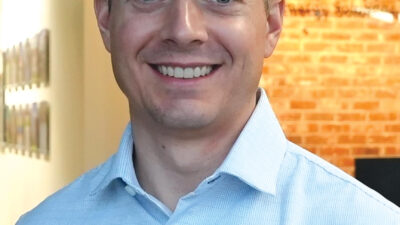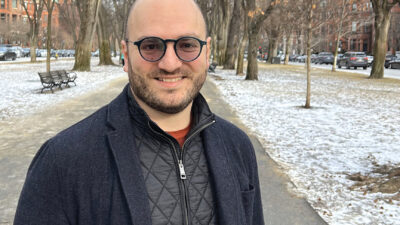Read about emerging trends in college and university buildings, and learn about the emerging trends impacting their design

Respondents
Travis Fletcher
Envise
Fletcher brings more than 15 years in the construction and real estate development industries to the company. He is an active member of industry organizations such as the Urban Land Institute, Smart Cities Council and Orange County Business Council.
Ryan Fryman
TLC Engineering Solutions
Fryman has managed the engineering team for numerous higher education facilities, predominantly for public universities in Florida. His range of experience extends from fitness centers to highly sophisticated laboratory buildings and housing to university administration buildings, commonly attaining LEED Gold certification or higher.
Carl Holden
Henderson Engineers Inc.
As Vice President|Higher Education Practice Director, Holden works on local, national and international projects. His areas of specialty include higher education, medical education, K-12 schools and sustainability-focused projects.
John O’Connell
Kohler Ronan
As senior associate, O’Connell’s primary responsibility is managing the company’s electrical department. He keeps current with industry trends such as green building design and LEED certification to educate other staff.
David K. Piluski
RTM Engineering
Piluski has more than three decades of experience designing MEP systems for a broad range of new construction projects as well as renovations. His specialties include higher education, health care and restaurant/entertainment facilities.
Bob Sherman
Affiliated Engineers Inc.
As principal and project manager, Sherman offers expertise in higher education research labs and health care facilities, During his tenure, he has led more than 2 million square feet of functionally complex facility projects.
Randy C. Twedt
Page
Since joining the company 25 years ago, Twedt has worked on a diverse range of MEP projects. His contributions include medical projects, multiunit residences, university structures, courthouses and more.
Jeffrey P. Wegner
CRB
Since joining the firm in 2013, Wegner has worked on a range of projects, focusing on life sciences, biotechnology, pharmaceutical, aerospace and other high-tech projects. His expertise includes site utility master planning, alternative energy solutions, biocontainment and more.
CSE: What level of performance are you being asked to achieve, such as WELL Building Standards, U.S. Green Building Council LEED certification, net zero energy, Passive House or other guidelines?
Holden: We often are considering a minimum of LEED Silver as many clients support or are signatory to the American College and University Climate Commitment. We have seen some interest in WELL Building concepts from clients but few that have implemented fully so far.
Piluski: Many colleges and universities I work with have mandated a “design toward” LEED Silver goal. This can mean any number of things when put in practice and leads to some interesting conversations when looking at ways to validate this goal without the third–party accountability. On a recent project, the “design toward” goal was upgraded to actual submission for LEED Silver certification part–way through the design process. This revealed flaws in the “design toward” model and illustrated the need for early planning if any specific goals are desired, whether officially validated or not.
Fryman: Many of the universities we work with have minimum sustainability requirements in place, many of which include LEED certification. Gold LEED certification is a typical goal. We’ve also started to see requests for other types of green building rating systems (Green Globes, Florida Green Building Coalition, etc.).
CSE: What unusual systems or features are being requested to make college and university projects more energy efficient?
O’Connell: We have seen more clients moving away from traditional campus steam/chilled water supply systems and toward geothermal based distributed energy systems for heating hot water and chilled water. Another common trend is DOAS — equipped with energy recovery and demand-controlled ventilation—coupled with active chilled beam terminal units. DCV controlled VAV boxes modulate primary outdoor air to the minimum required for ventilation, while latent loads and outdoor air preconditioning loads are handled at the DOAS/energy recovery vehicle. Thermal energy storage, primarily in the form of ice tanks, is also being requested more frequently. Clients employ the technology to take advantage of demand response programs and to potentially reduce the nominal installed chiller plant capacity.
Piluski: Large and high–density occupancy spaces require greater levels of ventilation. In the primary region of my projects in Wisconsin and northern Illinois, this ventilation must be conditioned nearly every day all year long. Effective energy recovery systems will afford noticeable impacts on energy use in the conditioning of ventilation air.
Fryman: We were recently asked to consider a geothermal system for the heating of a competition pool. We are in the process of evaluating the performance and comparison to other options.
CSE: What types of sustainable features or concerns might you encounter for these buildings that you wouldn’t on other projects?
Fryman: On one university housing project, we considered providing sustainability dashboards to convey energy and water use/savings and recyclables collected, measured per individual building quad, floor or wing of a dormitory. This information was to be displayed in a competitive format to see which group could be the best stewards of resources and win a prize. Though a fun idea, it was value-engineered from the project.
O’Connell: Particularly on college and university campus projects, space programming frequently results in less than ideal zoning with adjacent spaces having different indoor environmental quality requirements. In situation such as distributed geothermal energy where available water temperatures are relatively neutral, maintaining tight humidity control for adjacent specialty spaces can be challenging. Electric humidifiers, local chillers with ice storage and additional PV to offset increased on-site energy consumption may be an option, however depending on utility rate structures and existing electrical capacity, the additional load and potential demand charges may be significant constraints.
CSE: What types of renewable or alternative energy systems have you recently specified to provide power?
Fletcher: I’ve recently worked with thermal energy storage systems and I am often challenged with getting the building automation system to work correctly with the tank and permanent load shifting programs from the utilities. Additionally, it’s difficult to find the right location for the tank itself.
O’Connell: PV remains the most common type of renewable energy requested by our clients, followed by solar evacuated tubes for hot water production. In addition, we have designed cogeneration systems, earth ducts, wind turbines, solar chimneys, waste-oil boilers and fuel cells. One of the main challenges is allocating enough area, either indoors or outdoors depending on the system, to accommodate these renewable energy systems.
Piluski: I have encountered both PV and wind turbines for recent projects. However, in both cases these were used more from the aspect of a teaching tool than actual energy sources. The systems were too small to be noticeably effective, but the exercise did show that such systems can serve both purposes by being illustrations of alternative energy sources as an educational feature while actually contributing to the energy supplied to the building.
CSE: How has the demand for energy recovery technology influenced the design for these kinds of projects?
Piluski: In new and existing buildings, space is of a premium. In new buildings, ownership sees the best use of space as active teaching territory, while in existing buildings the ample space may just not exist. New technologies coupled with safety systems and backup equipment will require more space than was needed in previous designs. Planning in the programming stage of a project is important to allow for these systems and to manage expectations related to how much real estate must be allowed for MEP systems.
O’Connell: With increasingly stringent energy code requirements — including stretch codes and campus standards mandating percentage improvement over current code — energy recovery has moved from industry best practice to standard of care. Particularly when designing airside energy recovery such as DOAS/ERVs, earlier collaboration is required to ensure sufficient return air pathways are available without increasing static pressures to the point where fan energy consumption eclipses energy recovery savings benefits. Additionally, energy modeling has become increasingly valuable during early design when determining the facility’s load profile, identifying opportunity for airside/waterside economizing and weighing the incremental benefit of additional energy recovery equipment.
CSE: What value-add items are you adding these kinds of facilities to make the buildings perform at a higher and more efficient level?
O’Connell: One of the most undervalued energy efficiency measures, particularly for colleges and universities in urban environments, is providing adequate and safe access for equipment maintenance. To help facilitate proper preventive maintenance strategies and to capture associated energy savings and equipment longevity benefits, O&M personnel need to be able to easily and safely access systems components. In our design we prioritize equipment access and attempt to have O&M staff participation early on so that all members of the design team understand the importance of equipment access and how integral it is to achieving high-level building performance over the long term.
Piluski: Addition of sub-metering to mechanical and electrical distribution systems provides the building operators with data that can help identify aspects of the building systems, which may have moved out of design tolerance or are failing. Better information by installing these value-added systems and controls up front can save time and expense when identifying operational issues down the line.
CSE: How have energy recovery products evolved to better assist in designing these projects?
O’Connell: In general, total recovery efficiency has increased over the past few years. Manufacturers are using heat exchangers with various media that allows greater heat transfer and moisture removal.



